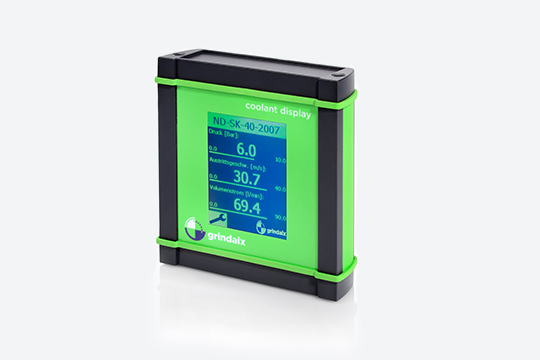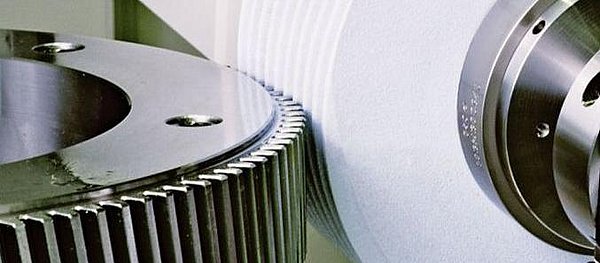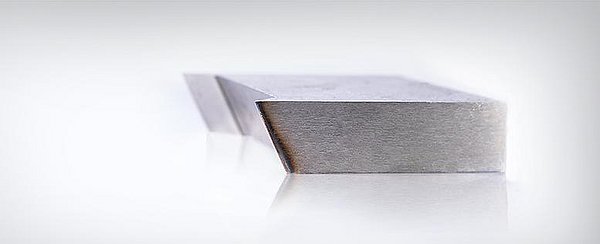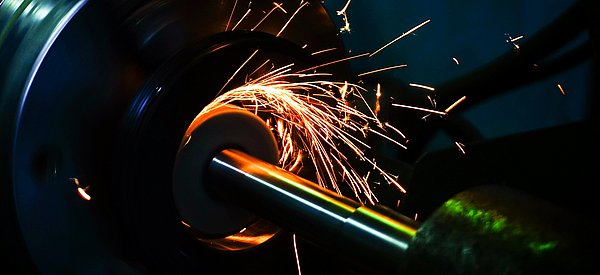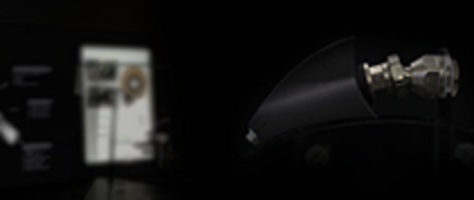Frequent problems during grinding
Grinding is a widespread production process and has long been a fixed part of almost every industrial production environment. During grinding, the parts (workpieces) are literally given the “final polish”. Grinding operations thus contribute greatly to the quality of the finished workpiece. However, problems can often occur during the grinding process.
The biggest and most known problem is without doubt grinding burn, which is thermal damage to the rim zone of the part. Grinding burn occurs when too much heat is channelled into the part. Microcracks and brittle surfaces are often the result. The occurrence of grinding burn depends on a number of factors and the interactions thereof. The most frequent problems during grinding include:
Overly high infeed
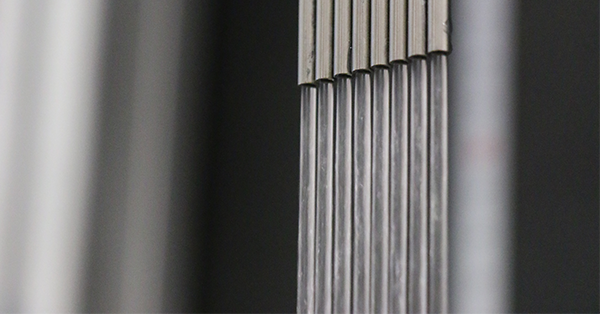
When grinding parts (workpieces), the process generates a great deal of heat, which is ideally led away with the chips and the coolant lubricant. However, it is impossible to avoid some of the heat entering the part. As long as the heat input into the part is not too great, this poses no problems to the production process. However, if the infeed is too high during grinding and there is insufficient cooling, such a great amount of heat enters the part that grinding burn occurs. Other wrongly selected process parameters may also have the same effect during part machining. The Coolant Audit from Grindaix GmbH provides a comprehensive analysis, during which the process is looked at in detail.
Do you want to reduce the heat input during grinding? Quaker Houghton offers you a wide range of products for this purpose. The experts at Quaker Houghton will be happy to advise you.
Grinding with wrong and/or wrongly aligned nozzles
Due to its “plumbing character”, coolant lubricant supply is often not completely thought through. This is a mistake, as the coolant lubricant supply makes a decisive contribution to the process reliability of the machining task. Consequently, clamped pipes or similar constructions cannot represent an adequate coolant lubricant supply solution.
To convey coolant lubricant to the machining site for the purpose of cooling, the use of needle nozzles is recommended, as the laminar flow of the coolant lubricant allows the jet to be directed in a very targeted way to the machining site. Moreover, the exit speedmay be set exactly, so that all process parameters can be aligned precisely.
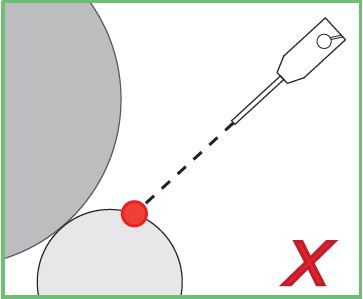
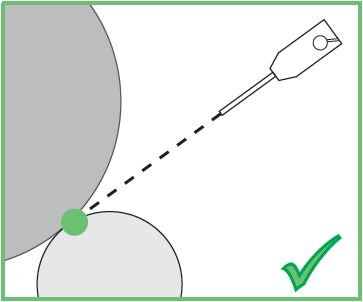
To not only achieve the direct supply of coolant lubricant into the machining zone but to also transport coolant lubricant via the grinding wheel, coolant lubricant nozzles may be used for saturation. These nozzles clean the free pore spaces of the grinding wheel and then fill them with coolant lubricant before the wheel comes into contact with the workpiece again. The coolant lubricant transported in this way is introduced precisely into the machining zone and can cool the process reliably there.
Grinding with too little coolant lubricant
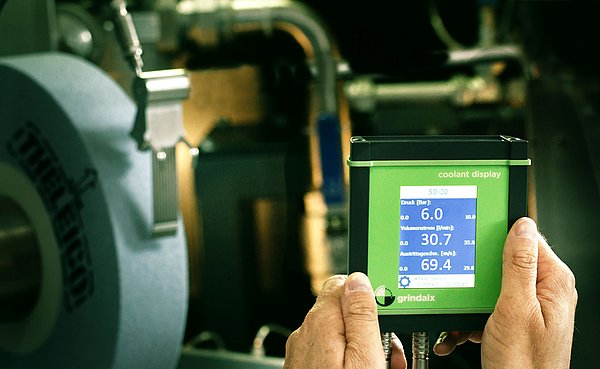
So that a grinding process runs without the occurrence of grinding burn, it is essential to ensure an adequate coolant lubricant supplyto the machining zone. A large proportion of the waste process heat is bound and transported away in the coolant lubricant. Only part of the heat generated is taken up by the part, thereby lowering the risk of grinding burn considerably. Frequently, coolant lubricant is used generously in machine tools in an attempt to achieve a process with zero grinding burn. However, even massive use of coolant lubricant will not succeed in preventing grinding burn if it is unable to reach the machining site in a targeted way and at the right exit speed.
If Grindaix nozzles are used during a grinding process for coolant lubricant supply, it is possible to take advantage of the Coolant Display to monitor the precise volume flow in l/min and the exit speed of the coolant lubricant from the nozzle at any time. This generates process reliability.
Preventing grinding burn requires more than just the right nozzle. In combination with the right process fluid, you can get the best out of your machine and avoid grinding burn in the long term. With us you will find the perfect solution!
Grinding with the wrong process parameters
To ensure that the coolant lubricant optimally reaches the machining zone, a precise ratio between the rotational speed of the grinding wheel and the exit speed of the coolant lubricant from the nozzle needs to be set. Once this operating point has been found, the machining task runs in an optimum way. However, if a parameter, such as the rotational speed of the grinding wheel, is changed, grinding burn usually occurs, as the exit speed of the coolant lubricant must be adapted in such a case to the altered rotational speed. So that this does not need to be carried out manually, Grindaix GmbH offers closed loop control systems which, combined with the PLC (programmable logic control) of the machine tool and the pump electronics, implement the relevant adjustments fully automatically. Needs-based control of pumps and valves is also achieved with the Grindaix Coolant Controller.
Grinding wheel loading
If a grinding wheel is highly loaded, the pore spaces become clogged. This means that the grinding wheel can then no longer transport any coolant lubricant and removed chips are no longer led away reliably from the machining site. In such a case, cleaning nozzles are recommended in order to make optimum use of the grinding wheel. Cleaning nozzles are nozzles which have been designed especially for removing machining residues from the grinding wheel with the aid of coolant lubricant. Combined nozzle solutions enable the supply of the machining site and cleaning of the grinding wheel using only one coolant lubricant supply line.
If you need to ensure reliable coolant lubricant supply for a particular machining task, the use of special nozzles tailored to this process are recommended. Grindaix GmbH is your competent partner with longstanding experience in the development, manufacture and implementation of special nozzles in your machine tool.

Insufficient cooling during grinding

Cooling during grinding prevents thermal damage to part (workpiece) and the grinding tools. The removal of process heat is achieved via targeted coolant lubricant supply to the machining zone. For this, sufficient coolant lubricant must enter into the machining zone. Besides the required coolant lubricant volume, the correct alignment of the coolant lubricant nozzles is also relevant. If the coolant lubricant does not enter 100 % into the machining zone, it takes up less process heat and grinding burn may occur. Needs-based, targeted coolant lubricant supply is the basis for achieving optimum cooling during grinding.
Frequently, coolant lubricant supply is achieved via simple coolant lubricant nozzles (e.g. tubes with clamped ends). If thermal damage occurs during production, exchanging the coolant lubricant supply nozzles may solve the problems. Depending on the grinding machine and grinding process, there are a number of coolant lubricant nozzles which ensure needs-based coolant lubricant supply(you can find examples here). Other advantages of optimum cooling may be a higher service life for the grinding tools and higher productivity of the grinding process (e.g. through fewer rejects and larger production figures).
Summary
The grinding of parts (workpieces) is a frequent but not trivial machining process for metallic parts. Many influencing variables are decisive and even small changes to the settings on the grinding machine or to the coolant lubricant supply may lead to grinding burn. Grindaix GmbH is your experienced partner when it comes to preventing grinding burn, offering a broad product range for use on your machine tool and comprehensive services for optimizing your production task. Simply contact us!
Grinding burn prevention is the core business of Grindaix.
We are familiar with the problems associated with grinding and will be happy to advise you on how to avoid grinding burn. If we have aroused your interest, please feel free to contact us: to the contact form
If you are interested in the topic of grinding burns, we will be happy to provide you with a free and non-binding checklist entitled “10 deadly sins to avoid when grinding”. The list contains 10 common mistakes when grinding and helps you to recognize and avoid them. To receive this checklist, please send us an e-mail to schleifbrand@grindaix.de.
Products relevant to this article:


You may also be interested in these articles from our magazine:
Grinding technology
Our article “Grinding technology” provides an overview of the complex topic of grinding technology with its many influencing factors. Here we offer you a complete overview of all relevant parameters.
Grindng burn
Thermal edge zone damage due to structural changes - commonly known as grinding burn. We explain the material-technical background and provide initial approaches for preventing grinding burn.
Tool grinding
Tool grinding is a particularly critical grinding application due to the special hardness of the workpiece. We have compiled a list of things to pay particular attention to when grinding tools.
Flow analysis of air cushions
Based on the phenomenon of boundary layer adhesion described above, additional studies on the shape and characteristics of the grinding wheel air cushion are available in the literature.

